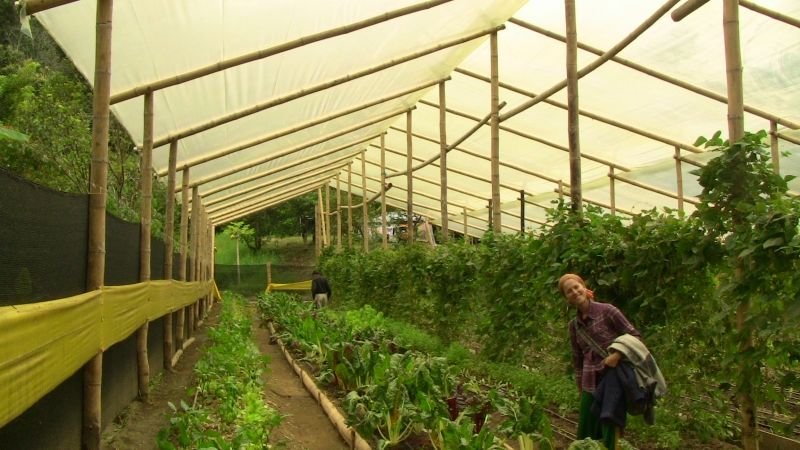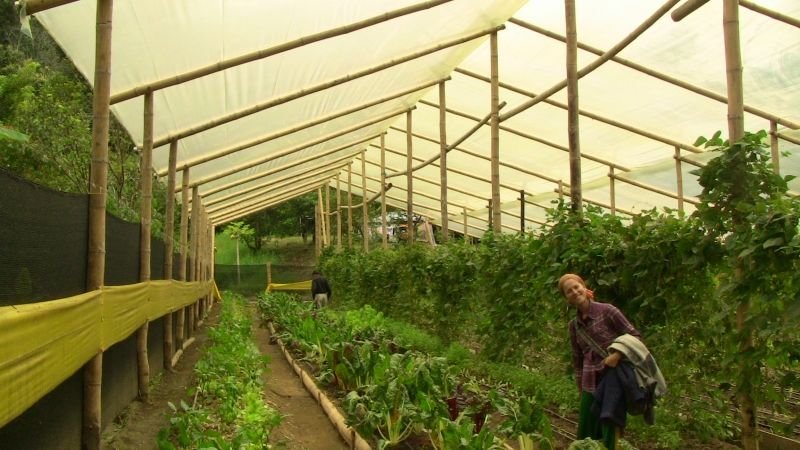Imagine growing fresh, healthy vegetables year-round, no matter the weather outside. Sounds like a dream, right? Well, with the **Walipini underground greenhouse**, this dream can become a reality. The Walipini is an ancient farming technique that is gaining popularity in modern sustainable agriculture. It offers a practical solution for growing food in a variety of climates, especially in regions with extreme weather conditions.

### What is a Walipini Underground Greenhouse?
A **Walipini** (meaning “place of warmth” in Aymara) is an underground greenhouse that harnesses the earth’s natural heat to create an optimal growing environment for plants. It’s an efficient, low-cost, and eco-friendly way to grow vegetables, fruits, and herbs throughout the year, no matter the external climate conditions.

Unlike traditional greenhouses that rely on external power sources for heating, the Walipini uses the earth’s consistent temperature to maintain a warm, stable environment. This structure is partially buried underground, taking advantage of the earth’s natural insulation properties. The result is a highly efficient greenhouse that maintains warmth during the cold months and stays cool in the hot summer.
### How Does the Walipini Underground Greenhouse Work?
The concept behind the Walipini is simple yet effective. Here’s how it works:
1. **Underground Insulation**: By burying the greenhouse underground, it takes advantage of the earth’s natural temperature regulation. The deeper the greenhouse is buried, the more stable the internal temperature will be. The earth acts as an insulator, keeping the greenhouse warm in winter and cool in summer.

2. **Solar Energy**: The greenhouse is built with a transparent roof that allows sunlight to enter. Solar energy is captured and stored by the soil, helping to warm the greenhouse during the day and maintain a stable temperature at night.
3. **Natural Ventilation**: Proper ventilation is essential for healthy plant growth. Walipini greenhouses are designed to have ventilation systems that allow hot air to escape while letting fresh air in. This keeps the environment comfortable for plants.
4. **Efficient Use of Water**: Because the Walipini greenhouse is buried underground, it retains moisture and reduces water evaporation. This means less water is required to irrigate the crops, making it a sustainable solution for water conservation.
### Benefits of Growing Food in a Walipini Underground Greenhouse
1. **Year-Round Food Production**: The most obvious benefit of the Walipini underground greenhouse is the ability to grow food year-round. Whether it’s freezing cold outside or unbearably hot, your crops can continue to thrive inside the greenhouse.
2. **Reduced Energy Costs**: Traditional greenhouses often require heating systems to maintain a suitable environment for plants during the colder months. In contrast, the Walipini greenhouse uses the natural heat of the earth to maintain a consistent temperature, reducing the need for energy consumption.
3. **Eco-Friendly and Sustainable**: The Walipini greenhouse is a highly sustainable farming method. It reduces the need for fossil fuels and is highly energy-efficient. By using natural resources like sunlight and the earth’s heat, it minimizes the environmental impact of farming.
4. **Protection from Harsh Weather**: The Walipini offers protection from extreme weather conditions such as heavy rain, snow, or high winds. This makes it an ideal solution for farming in regions where conventional outdoor farming would be too challenging.
5. **Low-Cost Construction**: Building a Walipini greenhouse is affordable, especially compared to traditional greenhouses. The materials required are simple, and the structure itself can be built with minimal costs. It’s a cost-effective solution for small-scale farmers or anyone looking to start their own sustainable food source.
### How to Build Your Own Walipini Underground Greenhouse
Building a Walipini underground greenhouse doesn’t require specialized skills or expensive materials. Here’s a general overview of how to get started:
1. **Choose a Location**: Select a location with good access to sunlight, ideally facing south (in the northern hemisphere). The site should also be well-drained to prevent water from pooling inside the greenhouse.
2. **Excavate the Ground**: Dig a trench deep enough to bury the greenhouse structure. The depth of the trench depends on your climate, but the general rule of thumb is to dig at least 4-6 feet deep.
3. **Build the Structure**: The greenhouse frame is typically made of wood, metal, or PVC pipes. Use sturdy materials to ensure the structure can withstand the weight of the earth and weather conditions. The roof should be transparent (polycarbonate or plastic sheeting works well) to allow sunlight to enter.
4. **Ventilation and Irrigation**: Install ventilation systems at both ends of the greenhouse to allow airflow. You can also incorporate a rainwater harvesting system or drip irrigation to water your plants efficiently.
5. **Plant Your Crops**: Once your Walipini is built, it’s time to plant Choose crops that will thrive in your climate, such as tomatoes, lettuce, peppers, herbs, and other vegetables. Since the environment inside the greenhouse is controlled, you’ll be able to grow a variety of crops year-round.
### The Future of Sustainable Farming
The Walipini underground greenhouse is a game-changer for anyone interested in sustainable agriculture. Whether you’re a hobbyist gardener or a commercial farmer, this eco-friendly solution offers the ability to grow food year-round with minimal environmental impact. By utilizing the earth’s natural temperature regulation and harnessing solar energy, the Walipini allows you to produce fresh, healthy food in any climate, all year long.
With its low-cost construction and high efficiency, the Walipini is an ideal solution for farmers, homesteaders, and anyone looking to reduce their carbon footprint and embrace sustainable food production. Start building your own Walipini today and take a step toward a more sustainable future.
